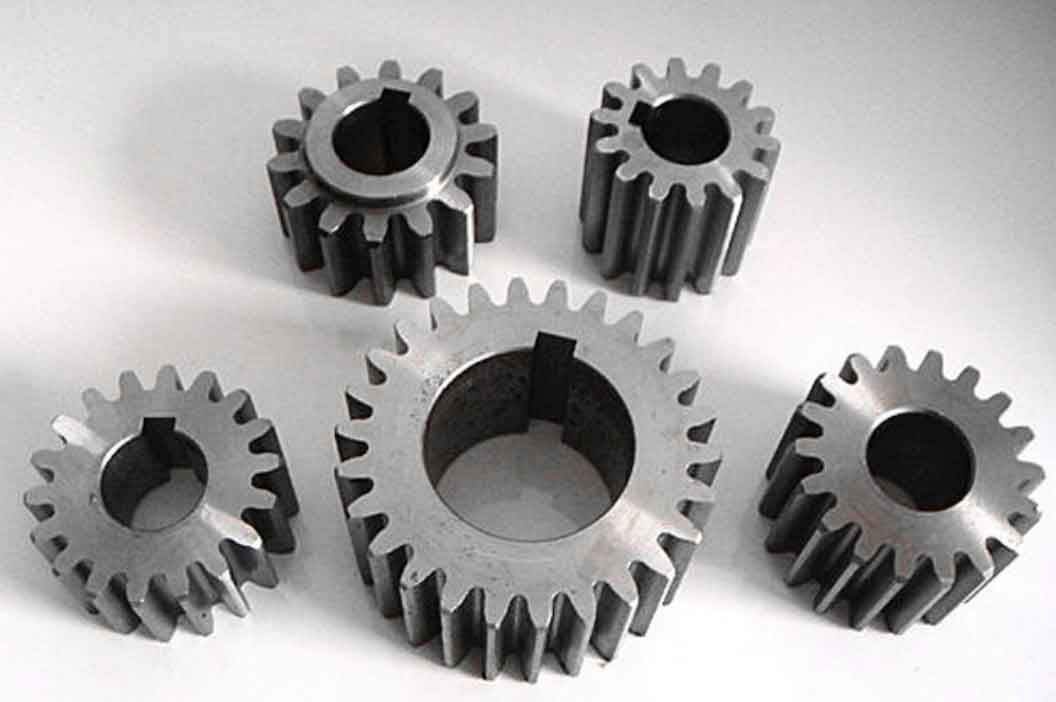Abstract:
Local damage is a common fault in spur gear, affecting the smooth and safe operation of gear transmission. This paper investigates the dynamic characteristics of meshing and impact in spur gear systems with local damage, considering friction. Based on spur gear meshing principles and an energy dissipation impact contact force model, meshing and impact models are established for gears with local damage. The findings reveal the influence of local damage on spur gear system performance and provide new insights for fault prediction and parameter design.

1. Introduction
Spur gear is widely used in various mechanical equipment for efficiently transmitting power and motion. However, minor local damage to gear teeth is common and can affect the smoothness and lifespan of spur gear systems. Under high-speed and light-load conditions, gear systems may experience rattling phenomena. Studying the meshing and impact characteristics of spur gear systems with local damage is crucial for improving transmission performance and ensuring stable operation.
| Study Focus | Key Considerations |
|---|---|
| Local Damage | Gear meshing principles, energy dissipation impact models |
| Spur Gear Systems | Dynamic characteristics, friction effects |
| Objectives | Improve transmission performance, fault prediction |
2. Methodology
2.1 Gear Geometry and Damage Characterization
The spur gear geometry parameters and local damage characterization are presented in Table 1.
| Parameter | Value |
|---|---|
| Number of teeth (z) | 40 (both driving and driven gears) |
| Module (m) | 3 mm |
| Addendum coefficient (ha) | 1 |
| Dedendum coefficient (c) | 0.25 |
| Pressure angle (α0) | 20° |
Local damage causes premature exit of meshing at point D1, changing the double-tooth meshing zone into a single-tooth zone.
2.2 Multi-State Meshing and Impact Classification
Based on relative displacement and damage, spur gear meshing and impact behaviors are classified into five types:
| Type | Description | Boundary Conditions |
|---|---|---|
| Double-tooth surface meshing | Two teeth pairs simultaneously engaged | x≥D, nT0≤t≤(n+ϵs−1)T0 |
| Single-tooth surface meshing I | In single-tooth meshing zone (BC) | x≥D, (n+ϵm−1)T0<t<(n+1)T0 |
| Single-tooth surface meshing II | Due to local damage | x≥D, (nb+ϵb−1)T0<t≤(nb+ϵm−1)T0 |
| Teeth separation | Gears separated | −D<x<D, nT0≤t≤(n+1)T0 |
| Tooth back impact | Contact at tooth back | x=−D, nT0≤t≤(n+1)T0 |
3. Dynamic Modeling
3.1 Equations of Motion
The equations of motion for different meshing states are derived based on Newton’s second law. For example, during double-tooth surface meshing:
mex¨+[1+λd1μd1(t)gd1(t)L1(t)+λd2μd2(t)gd2(t)L2(t)](kmd(t)(x−D)+cgx˙)=F+Fh(t)
Where me is the equivalent mass, kmd(t) is the double-tooth meshing stiffness, cg is the damping coefficient, F is the total load, and Fh(t) is the internal error excitation.
3.2 Impact Equation
During tooth back impact, the collision equation is:
x˙(−)+δx˙=−mRx˙(+)
Where x˙(−) and x˙(+) are the velocities before and after impact, respectively, and R is the restitution coefficient.
4. Time-Varying Parameters Calculation
4.1 Time-Varying Stiffness
The time-varying meshing stiffness km(τ) and tooth back contact stiffness kc(τ) are calculated using:
km(τ)1=kh1+kbji1+kaji1+ksji1+kf1
Where kh is the time-varying Hertzian contact stiffness, and kbji, kaji, ksji, and kf are bending, axial compression, shear, and substrate stiffnesses, respectively.
| Stiffness Type | Description |
|---|---|
| kh | Hertzian contact stiffness |
| kbji | Bending stiffness |
| kaji | Axial compression stiffness |
| ksji | Shear stiffness |
| kf | Substrate stiffness |
4.2 Time-Varying Load Distribution Coefficient
The load distribution coefficient L(ξ) is calculated using:
L(ξ)=ξD−ξAξA+1−ξC(t)forξA+1≤ξC(t)≤ξD
Where ξA, ξD, and ξC(t) are tooth profile parameters.
5. Dynamic Characteristics Analysis
5.1 Contact Force Variation
The dynamic contact force Fm varies periodically, with transitions between tooth surface meshing, teeth separation, and tooth back impact.
| Phenomenon | Contact Force (Fm) |
|---|---|
| Tooth surface meshing | Fm>0 |
| Teeth separation | Fm=0 |
| Tooth back impact | Fm<0 |
5.2 Effect of Load Coefficient
As the load coefficient F decreases, the system transitions from stable periodic motion to chaotic motion and period coexistence, with tooth back impacts occurring at lower loads.
| Load Coefficient (F) | System Behavior |
|---|---|
| High | Stable periodic motion, no tooth back impact |
| Medium | Chaotic motion and period coexistence, tooth back impact |
| Low | Tooth back impact, no period coexistence |
5.3 Effect of Meshing Frequency
With increasing meshing frequency ω, the system exhibits various periodic motions and chaotic behaviors, with tooth back impacts occurring within specific frequency ranges.
| Meshing Frequency (ω) | System Behavior |
|---|---|
| Low | Periodic motion, no tooth back impact |
| Medium | Period coexistence and chaotic motion, tooth back impact |
| High | Chaotic motion, potential tooth back impact |
6. Conclusion
This paper presents a comprehensive study on the dynamic characteristics of spur gear systems with local damage, considering multi-state meshing and impact behaviors. The findings reveal that local damage affects the meshing stiffness, load distribution, and contact force variation, leading to reduced load-carrying capacity and increased system complexity. The results provide valuable insights for spur gear system parameter design and fault prediction.
